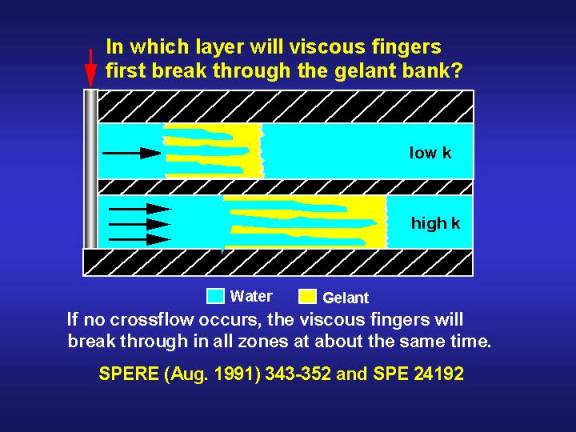When Using Viscous Gelants, Can Viscous Fingering by a Water Postflush Reliably Breakthrough the Gelant Bank in Low-Permeability Zones Before That in High-Permeability Zones?
(No.)
When a viscous gelant is used, a water postflush prior to gelation will tend to form viscous fingers through a gelant (see Fig. 17). When compared to the most-permeable zone, the size of the gelant bank is smaller in the less-permeable zones, so viscous fingers have a shorter distance to travel to achieve breakthrough. However, the viscous fingers will propagate much more rapidly in the most-permeable zone.

Ref. 42 describes a detailed theoretical and experimental investigation to answer the above question. That study found that in reservoirs with non-communicating layers, the viscous fingers break through the gelant banks in the high-permeability zones, on average, at about the same time as in the less-permeable zones. Therefore, viscous fingering generally will not eliminate the need to protect hydrocarbon-productive zones during gel placement.